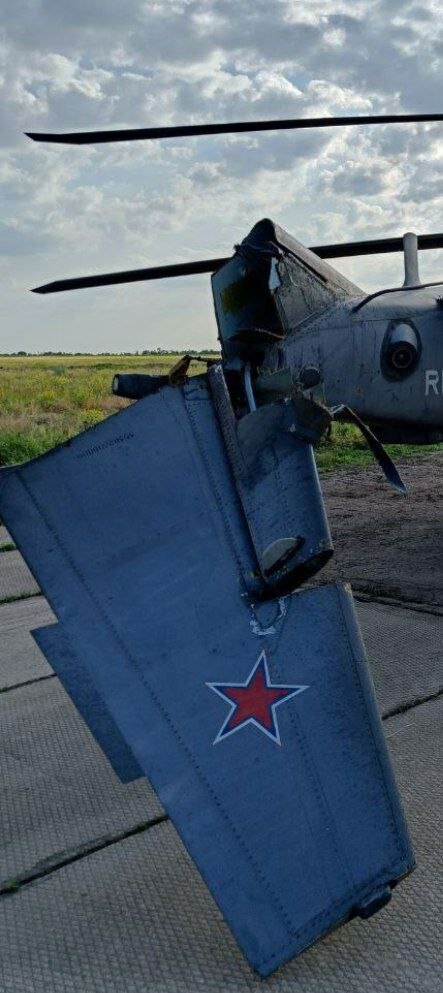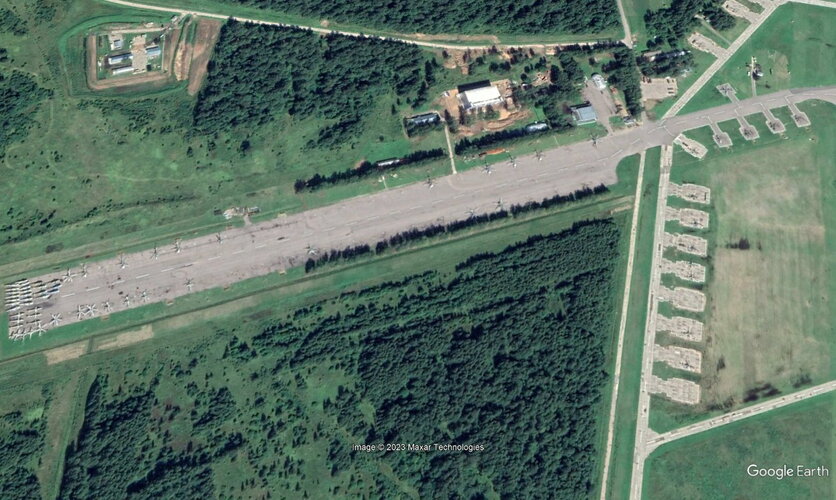You are using an out of date browser. It may not display this or other websites correctly.
You should upgrade or use an alternative browser.
You should upgrade or use an alternative browser.
Kamov Ka-50 / Ka-52 Hokum Family Thread
- Thread starter yasotay
- Start date
- Joined
- 21 January 2015
- Messages
- 12,147
- Reaction score
- 16,347
This is not just an issue for Ukraine but points out a weakness in US & western militaries in general in this area of SHORAD (short range air defense).

 www.thedrive.com
www.thedrive.com

Ukraine's Armor Appears To Have A Russian Attack Helicopter Problem
Russian Ka-52 attack helicopters' presence at the front highlights the need for highly mobile and survivable short-range air defenses.
jsport
what do you know about surfing Major? you're from-
- Joined
- 27 July 2011
- Messages
- 7,732
- Reaction score
- 5,750
..will repeat what was expressed after Javelin reports started at the start of the war.. APS is not only more than necessary but the TARDEC "revenge shot" concept capability ie something w/ some range and firepower against the offending launch vehicle, even aircraft, similar to the proposed SLID missile are necessary.This is not just an issue for Ukraine but points out a weakness in US & western militaries in general in this area of SHORAD (short range air defense).

Ukraine's Armor Appears To Have A Russian Attack Helicopter Problem
Russian Ka-52 attack helicopters' presence at the front highlights the need for highly mobile and survivable short-range air defenses.www.thedrive.com
Avenger + M-SHORAD are a step, but in widely dispersed battlefields small AFV/IFV formations and or individual lead vehicles will need organic CRAM and/or even 'revenge shot' capability.
QuadroFX
Russia, Chelyabinsk
Ka-52 with damaged tail somewhere near Ukraine:
View: https://youtu.be/gn-5Te45tpQ

 t.me
t.me
Fighterbomber
За время контрнаступа хохлы сбили ноль (нуль, зерро) летабл доблестных ВКС. Но кой-че конечно случалось. Не по вине хохлов. А потому что жизнь такая. Так, надысь, при сбросе ПТБ*, они чёт взяли и снесли нахер киль вертолету. Ну шо делать, полетел себе дальше за новым килем. Уже приделывают...
Attachments
That's the caase of most milittaries. Russia included, though less prominent. They have Tor as SHORAD, but it's quite expensive platform.This is not just an issue for Ukraine but points out a weakness in US & western militaries in general in this area of SHORAD (short range air defense).

Ukraine's Armor Appears To Have A Russian Attack Helicopter Problem
Russian Ka-52 attack helicopters' presence at the front highlights the need for highly mobile and survivable short-range air defenses.www.thedrive.com
2S6 is outdated, and Patsir-S is stationary AD unit.
It's not enough. Even Vikhr-M at low-alt outranges their missiles, to say nothing of latest ATGMs like Spike/Brimstone (even if their range is degraded when launching from helicopter/UAV.Avenger + M-SHORAD are a step, but in widely dispersed battlefields small AFV/IFV formations and or individual lead vehicles will need organic CRAM and/or even 'revenge shot' capability.
IMO, Russia grasped the first half of effective battlefield SHORAD with Pantsir. It's a smart chassis with fast and cheap dumb missile with command guidance. The other half would be place Pantsir on tracks, slap APS on it and add second vehicle with solid-state laser to counter FPV drones.
Ainen
I really should change my personal text
- Joined
- 25 August 2011
- Messages
- 1,277
- Reaction score
- 1,714
This statement is so...wrong, and it requires such a long post to explain, that probably we'll need someone like Battleorder to paint the full picture.That's the caase of most milittaries. Russia included, though less prominent.
Long story short: Russian army air defense (with it's half-page long English wiki entry) alone, without its larger VKS counterpart (or navy land units), is larger than any non-Russian/Chinese AD arm anywhere in the world.
...but drones are indeed a huge problem.IMO, Russia grasped the first half of effective battlefield SHORAD with Pantsir. It's a smart chassis with fast and cheap dumb missile with command guidance. The other half would be place Pantsir on tracks, slap APS on it and add second vehicle with solid-state laser to counter FPV drones.
Even Russian AD, which begins at regimental level, is hopelessly outnumbered compared to the threat.
US approach, which currently expects to have a small battery of ad-hoc vehicles at a divisional(!) level, later in 2020s, in Ukrainian conditions is ... incredibly optimistic.
Last edited:
Forest Green
ACCESS: Above Top Secret
- Joined
- 11 June 2019
- Messages
- 9,508
- Reaction score
- 17,401
Brimstone would probably work against a helicopter IMO.It's not enough. Even Vikhr-M at low-alt outranges their missiles, to say nothing of latest ATGMs like Spike/Brimstone (even if their range is degraded when launching from helicopter/UAV.
IMO, Russia grasped the first half of effective battlefield SHORAD with Pantsir. It's a smart chassis with fast and cheap dumb missile with command guidance. The other half would be place Pantsir on tracks, slap APS on it and add second vehicle with solid-state laser to counter FPV drones.
This was apparently a self-inflicted injury... when it dropped external fuel tanks, they blew back and broke the tail. That would seem to be a bit of a design flaw. Perhaps not enough wind tunnel testing.
View: https://www.youtube.com/watch?v=W9SVPasTJc8
- Joined
- 18 October 2006
- Messages
- 4,211
- Reaction score
- 4,919
Regardless, Apache, Cobra, Blackhawk, Z-10, Tiger... ANY standard helicopter with the lose of the vertical stabilizer and tail rotor would not still be in the air, let alone still in controlled flight. As someone who has been around helicopters for a while, that is impressive.This was apparently a self-inflicted injury... when it dropped external fuel tanks, they blew back and broke the tail. That would seem to be a bit of a design flaw. Perhaps not enough wind tunnel testing.
Last edited:
Advantage of the coax rotors.Regardless, Apache, Cobra, Blackhawk, Z-10, Tiger... ANY standard helicopter with the lose of the vertical stabilizer and tail rotor would not still be in the air, let alone still in controlled flight. As someone who has been around helicopters for a while, that is impressive.This was apparently a self-inflicted injury... when it dropped external fuel tanks, they blew back and broke the tail. That would seem to be a bit of a design flaw. Perhaps not enough wind tunnel testing.
DrRansom
I really should change my personal text
- Joined
- 15 December 2012
- Messages
- 701
- Reaction score
- 302
US approach, which currently expects to have a small battery of ad-hoc vehicles at a divisional(!) level, later in 2020s, in Ukrainian conditions is ... incredibly optimistic.
A lesson from Ukraine - all SHORAD and AD budgets are far far far too small.
8+km ATGMs do pose a very tough engagement problem. At that range, you'd need a Pantsir or ADATs sized missile, mounted on an armored launcher. Or a counter-air low altitude aircraft perhaps.
- Joined
- 27 May 2008
- Messages
- 1,178
- Reaction score
- 2,483
The question was asked concerning Ka52 availability, so here’s a photo which goes some way to answering;- it is said to show the main Ka 52 servicing base in the Russian western district,. On the ramp area on the left hand side can be seen above 30 stripped out redundant airframes. I understand there’s about 20-30 nominally complete aircraft also in the photo. With Orxy listing 35 photographic confirmed losses there’s a very high percentage of the fleet in these two sources alone.
Attachments
Это не стационарная ПВОа Пацирь-С - стационарная ПВО.
(This is not a fixed air defence system)
Last edited by a moderator:
Орикс это помойка. И, наконец, он закроется. По фото там планеры от Ми-24 если вы по форме не заметилиOrxy перечисляет 35 подтвержденных
(Oryx is a dump. And it will finally close. From the photo there are Mi-24 in case you haven't noticed from the shape)
Last edited by a moderator:
It is in a sense that is a system for PVO VKS meant for object protection, not PVO SV system.Это не стационарная ПВОа Пацирь-С - стационарная ПВО.
- Joined
- 1 April 2006
- Messages
- 11,390
- Reaction score
- 10,274
It is said by whom? Where? What those trash Hinds have to do with Hokums availability?The question was asked concerning Ka52 availability, so here’s a photo which goes some way to answering;- it is said to show the main Ka 52 servicing base in the Russian western district,. On the ramp area on the left hand side can be seen above 30 stripped out redundant airframes.
Well, write correctly that it is intended for the defense of stationary objects rather than columns on the march.Although he can do it tooIt is in a sense that is a system for PVO VKS meant for object protection, not PVO SV system.Это не стационарная ПВОа Пацирь-С - стационарная ПВО.
QuadroFX
Russia, Chelyabinsk
Nonsense from start to finish. Direct participants of these event claim that this is combat damage.This was apparently a self-inflicted injury... when it dropped external fuel tanks, they blew back and broke the tail. That would seem to be a bit of a design flaw. Perhaps not enough wind tunnel testing.
jsport
what do you know about surfing Major? you're from-
- Joined
- 27 July 2011
- Messages
- 7,732
- Reaction score
- 5,750
"Revenge Shot" concepts w/some range may need to approach the capability of traditional supporting M-Shorad missions as nearly every vehicle will need a long range APS option to augment the close APS systems against even helicopters and mortar teams.That's the caase of most milittaries. Russia included, though less prominent. They have Tor as SHORAD, but it's quite expensive platform.This is not just an issue for Ukraine but points out a weakness in US & western militaries in general in this area of SHORAD (short range air defense).

Ukraine's Armor Appears To Have A Russian Attack Helicopter Problem
Russian Ka-52 attack helicopters' presence at the front highlights the need for highly mobile and survivable short-range air defenses.www.thedrive.com
2S6 is outdated, and Patsir-S is stationary AD unit.
It's not enough. Even Vikhr-M at low-alt outranges their missiles, to say nothing of latest ATGMs like Spike/Brimstone (even if their range is degraded when launching from helicopter/UAV.Avenger + M-SHORAD are a step, but in widely dispersed battlefields small AFV/IFV formations and or individual lead vehicles will need organic CRAM and/or even 'revenge shot' capability.
IMO, Russia grasped the first half of effective battlefield SHORAD with Pantsir. It's a smart chassis with fast and cheap dumb missile with command guidance. The other half would be place Pantsir on tracks, slap APS on it and add second vehicle with solid-state laser to counter FPV drones.
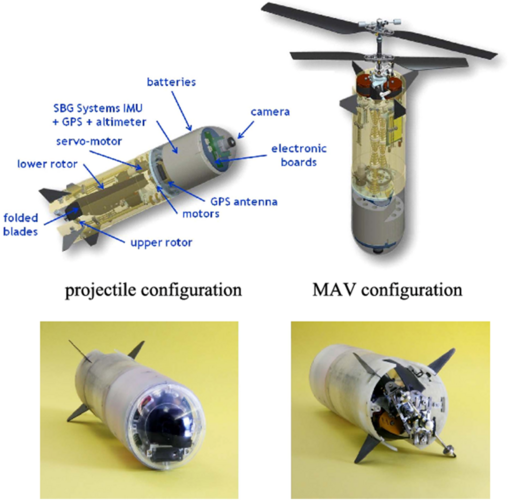
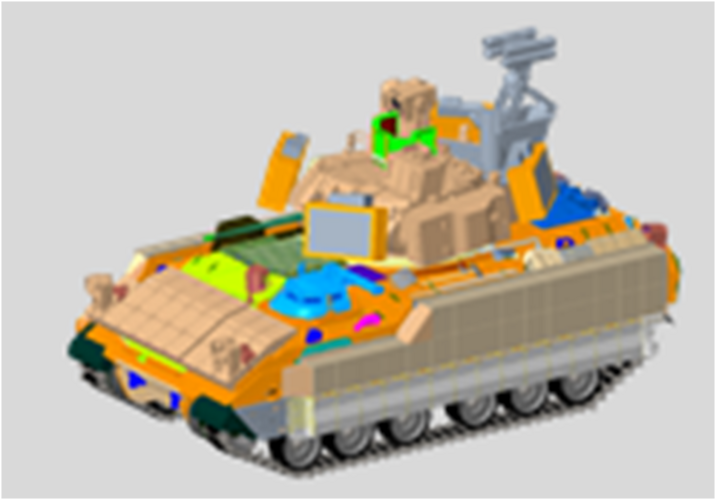
aonestudio
I really should change my personal text
- Joined
- 11 March 2018
- Messages
- 2,964
- Reaction score
- 7,493
- Joined
- 11 February 2010
- Messages
- 1,650
- Reaction score
- 2,701
Now what Ka-52 needs is perhaps an active radar homing missile in the league of Brimestone.
They might reverse-engineer it, as there were unexploded Brimstone missiles in good condition.Now what Ka-52 needs is perhaps an active radar homing missile in the league of Brimestone.
Forest Green
ACCESS: Above Top Secret
- Joined
- 11 June 2019
- Messages
- 9,508
- Reaction score
- 17,401
The only one I saw was photoshopped, with a bend where they removed the Ukrainian watermark.They might reverse-engineer it, as there were unexploded Brimstone missiles in good condition.
jsport
what do you know about surfing Major? you're from-
- Joined
- 27 July 2011
- Messages
- 7,732
- Reaction score
- 5,750
..will repeat what was expressed after Javelin reports started at the start of the war.. APS is not only more than necessary but the TARDEC "revenge shot" concept capability ie something w/ some range and firepower against the offending launch vehicle, even aircraft, similar to the proposed SLID missile are necessary.This is not just an issue for Ukraine but points out a weakness in US & western militaries in general in this area of SHORAD (short range air defense).

Ukraine's Armor Appears To Have A Russian Attack Helicopter Problem
Russian Ka-52 attack helicopters' presence at the front highlights the need for highly mobile and survivable short-range air defenses.www.thedrive.com
Avenger + M-SHORAD are a step, but in widely dispersed battlefields small AFV/IFV formations and or individual lead vehicles will need organic CRAM and/or even 'revenge shot' capability.
at the 23:25 mark begins why a IFV organic 'revenge shot' capability addition to an APS systems is a good idea.
aonestudio
I really should change my personal text
- Joined
- 11 March 2018
- Messages
- 2,964
- Reaction score
- 7,493
Forest Green
ACCESS: Above Top Secret
- Joined
- 11 June 2019
- Messages
- 9,508
- Reaction score
- 17,401
View: https://twitter.com/TpclATpcl/status/1674122509145325568?s=20The downing of the Russian Ka-52 "Alligator" helicopter by the "Wagner" MANPADS system on June 24.
Last edited:
F.L.
ACCESS: Top Secret
I seem to have seen this video a few months ago, and it looks like it's been reused.View: https://twitter.com/TpclATpcl/status/1674122509145325568?s=20The downing of the Katsap Ka-52 "Alligator" helicopter by the "Wagner" MANPADS system on June 24.
Avimimus
ACCESS: Top Secret
- Joined
- 15 December 2007
- Messages
- 2,426
- Reaction score
- 907
US approach, which currently expects to have a small battery of ad-hoc vehicles at a divisional(!) level, later in 2020s, in Ukrainian conditions is ... incredibly optimistic.
A lesson from Ukraine - all SHORAD and AD budgets are far far far too small.
8+km ATGMs do pose a very tough engagement problem. At that range, you'd need a Pantsir or ADATs sized missile, mounted on an armored launcher. Or a counter-air low altitude aircraft perhaps.
Well, it is worse than that - if you want to keep your air-defence somewhat protected from direct fires and easy spotting (for artillery) - you need to keep it more than two kilometres behind the vehicles it is protecting. So, it is more like at least 12-15 km to counter an 8 km missile.
Of course, that is assuming the helicopters are able to fire at maximum range. If they don't spot the vehicles immediately a Gepard with a ~3-4km effective range could be very lethal to a helicopter, in spite of it having 8km long 'teeth' under its wings.
Avimimus
ACCESS: Top Secret
- Joined
- 15 December 2007
- Messages
- 2,426
- Reaction score
- 907
Now what Ka-52 needs is perhaps an active radar homing missile in the league of Brimestone.
Wasn't the Hermes-A tested on the Ka-52? Is there any evidence of it being used operationally?

TempClip — Watch — Ka-52 Strikes Only June 2023 - HD 720p.mp4
Upload and share your temporary video with a link. Password protect your temporary videos. Set a time limit on your temporary video uploads.
- Joined
- 18 October 2006
- Messages
- 4,211
- Reaction score
- 4,919
A demonstration that attack helicopters, used with correct tactics (in this case superior stand off), remain viable. While UAV will supplement them and in some cases assume some of the more dangerous missions, manned platforms are not susceptible to weather (environmental conditions) electronic warfare and other means like unmanned. While loosing thousands of UAS a month remains less expensive than one attack helicopter, it does you no good if they are not as effective as a manned platform.
F.L.
ACCESS: Top Secret
It's quite right.A demonstration that attack helicopters, used with correct tactics (in this case superior stand off), remain viable. While UAV will supplement them and in some cases assume some of the more dangerous missions, manned platforms are not susceptible to weather (environmental conditions) electronic warfare and other means like unmanned. While loosing thousands of UAS a month remains less expensive than one attack helicopter, it does you no good if they are not as effective as a manned platform.
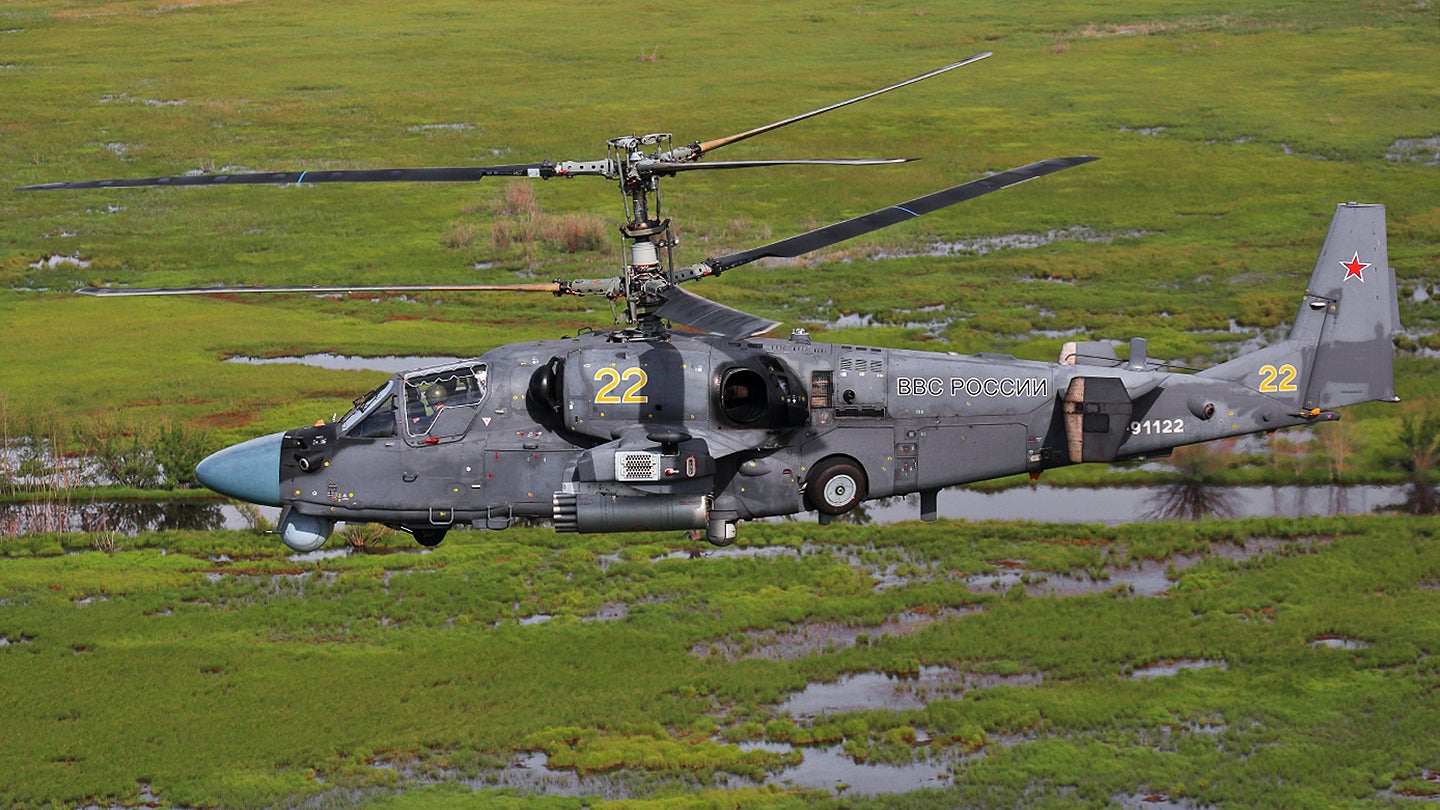
Enhanced Version Of Russia's Ka-52 Attack Helicopter Appears
The new version of the primary attack helicopter Russia is using in Ukraine is notably different from the prototype Ka-52Ms seen before.
- Joined
- 18 October 2006
- Messages
- 4,211
- Reaction score
- 4,919
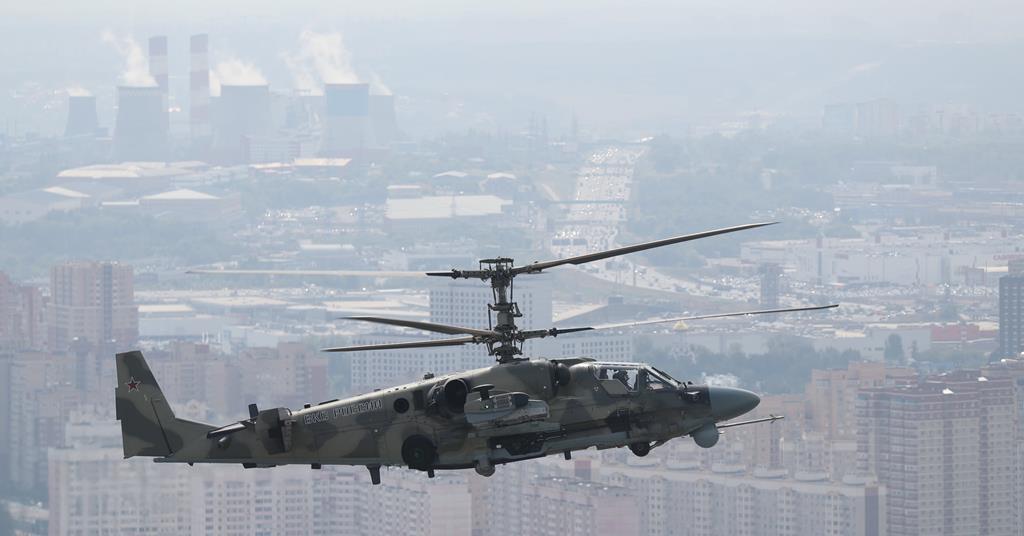
Ka-52 attack helicopter proves deadly foe to Ukrainian forces
The Kamov Ka-52 "Alligator" attack helicopter is proving to be a formidable adversary as the Ukrainian army continues its counter-offensive against Russian forces.
Triple Layer: DIRCM (Vitebsk-25, in a shock hardened mount, ala MUSS) and then kinetic interceptor ala LED-150 to kill threats which might otherwise be tempted to do a ranged EFP attack. And then MEFPS ala Strike Shield for the low tech stuff like NLAW/Javelin/RPG and to /maybe/ pitch change SLRP."Revenge Shot" concepts w/some range may need to approach the capability of traditional supporting M-Shorad missions as nearly every vehicle will need a long range APS option to augment the close APS systems against even helicopters and mortar teams. View attachment 701986View attachment 701985
This is half the answer. The other half is NLOS munitions. M1156 PGK is about 13,000 dollars per shot and will come down, in volume. XM1111 would likely be 'in the range' of Copperhead at around 70,000, and will not (static vs. mover engagement).
Moar Dakka as LOS direct fire solutions are stripping MBT rapidly down to helicopter levels of 16-18 shots in the latest, 130mm, guns. And those guns are so powerful that anything under 2,000m is increasingly at mutual kill overmatch, from both sides.
'He who hits first lives' makes ZERO sense when it's a 9 million dollar M1A2D, 10,000nm from garrison. You add the drone-cued NLOS and multizone APS on a 20 million dollar vehicle and it's ruinous. You don't need more than 500 active vehicles in inventory, you won't be able to get them to theater in time, if nothing else.
But they absolutely have to be more than Billy The Kid survivable as 70 ton quick draw artists.
And that's easy to do when you can shrink the caliber to 105mm, punch through the APS with MRSI and do roof kills as opposed to frontal arc nonsense, from 3-4 minutes of drive time. It is silly to have a 10-15km tube and 2-4km cutoff for accurate SLRP.
Add to this that the same Coyote drone which you rely upon for NLOS targeting can kill helicopters and so (with effort) can MRM with IIR/MMW seekers, and it becomes wiser to PAY FOR the survivability, with standoff and secure networking, rather than try to shoot down everything as it swarm-approaches. If you do a Khafji style maneuver regime of individual platoon or even section, 10km standoff attack from each side of the threat AA, the bad guy commander will not even know where to vector the drone swarm or it's force protection overwatch. Mines, ATGW and RT also degrade as targetable multipliers.
But none of this works, if the Pantsir-on-tracks ADV is over there and the other half of the platoon or company level force element has nothing. With the Air Defense Vehicle a tinplate plinker to every known fire out there, the method doesn't match the sunk cost:loss risk.
P.S. It's not the Vikhr you have to worry about. As soon as the Ka-52 or Mi-28 popup to take that shot, every mother's son will point and click at it. The missile to worry about is the LMUR Izdeliye 305. Twelve shot Vikhr was an anti-NATO missile, on the presumption that you launch 20 and 2 get thru (back when we had SHORAD).
In a much more limited total numbers environment, launch 2 recover 2, is more important, due to the cost of the helicopter avionics suite which is increasingly Apache-D/E like. And 8 missiles, going 7-9nm downrange is going to allow small Orlan or even Lancet UAS/LAM to clear the approaches and get helicopters to a beyond local horizon moment where the Copilot Gunner can then treat the big Hellfire like a small Walleye and just 'steer it in'.
Stagger the launches to provide X seconds of CPG seeker FOV switch window, saturate the ADVs first and things get real ugly, quite quick, for the ground maneuver element. Provided you're willing to pay the price for mass production of a multi-link secure missile comms system. Which the AESA based Arbalets followon suggests may be implicit.
jsport
what do you know about surfing Major? you're from-
- Joined
- 27 July 2011
- Messages
- 7,732
- Reaction score
- 5,750
The anti-efp stuff is good.Triple Layer: DIRCM (Vitebsk-25, in a shock hardened mount, ala MUSS) and then kinetic interceptor ala LED-150 to kill threats which might otherwise be tempted to do a ranged EFP attack.
Not sure arty entered this discussionAnd then MEFPS ala Strike Shield for the low tech stuff like NLAW/Javelin/RPG and to /maybe/ pitch change SLRP.
This is half the answer. The other half is NLOS munitions. M1156 PGK is about 13,000 dollars per shot and will come down, in volume. XM1111 would likely be 'in the range' of Copperhead at around 70,000, and will not (static vs. mover engagement).
What is Moar Dakka?Moar Dakka as LOS direct fire solutions are stripping MBT rapidly down to helicopter levels of 16-18 shots in the latest, 130mm, guns. And those guns are so powerful that anything under 2,000m is increasingly at mutual kill overmatch, from both sides.
..have been arguing that there is need to get back NLOS for tank guns introduced under FCS which started at 105mm
Drone cued NLOS defines the new maneuver supports fire replacing the fire supports maneuver concept being bantered about these days and defines hitting first.'He who hits first lives' makes ZERO sense when it's a 9 million dollar M1A2D, 10,000nm from garrison. You add the drone-cued NLOS and multizone APS on a 20 million dollar vehicle and it's ruinous.
Are u suggesting a proactive APS msle out to 15km?..would agree.You don't need more than 500 active vehicles in inventory, you won't be able to get them to theater in time, if nothing else.
But they absolutely have to be more than Billy The Kid survivable as 70 ton quick draw artists.
And that's easy to do when you can shrink the caliber to 105mm, punch through the APS with MRSI and do roof kills as opposed to frontal arc nonsense, from 3-4 minutes of drive time. It is silly to have a 10-15km tube and 2-4km cutoff for accurate SLRP.
tanks and IFVs shouldnt carry full swarms that is for another vehicle and coyote is more toy garbage.Add to this that the same Coyote drone which you rely upon for NLOS targeting can kill helicopters and so (with effort) can MRM with IIR/MMW seekers, and it becomes wiser to PAY FOR the survivability, with standoff and secure networking, rather than try to shoot down everything as it swarm-approaches.
The current ocean of defenses do to small units what they are doing to them now and both sides will have synoptic awareness..Minus full spectrum "blast thru" capability no units have any capability. APS and counter-obstacle/mine is needed at the lowest levelIf you do a Khafji style maneuver regime of individual platoon or even section, 10km standoff attack from each side of the threat AA, the bad guy commander will not even know where to vector the drone swarm or it's force protection overwatch. Mines, ATGW and RT also degrade as targetable multipliers.
MAPSBut none of this works, if the Pantsir-on-tracks ADV is over there and the other half of the platoon or company level force element has nothing. With the Air Defense Vehicle a tinplate plinker to every known fire out there, the method doesn't match the sunk cost:loss risk.
P.S. It's not the Vikhr you have to worry about. As soon as the Ka-52 or Mi-28 popup to take that shot, every mother's son will point and click at it. The missile to worry about is the LMUR Izdeliye 305. Twelve shot Vikhr was an anti-NATO missile, on the presumption that you launch 20 and 2 get thru (back when we had SHORAD).
In a much more limited total numbers environment, launch 2 recover 2, is more important, due to the cost of the helicopter avionics suite which is increasingly Apache-D/E like. And 8 missiles, going 7-9nm downrange is going to allow small Orlan or even Lancet UAS/LAM to clear the approaches and get helicopters to a beyond local horizon moment where the Copilot Gunner can then treat the big Hellfire like a small Walleye and just 'steer it in'.
Stagger the launches to provide X seconds of CPG seeker FOV switch window, saturate the ADVs first and things get real ugly, quite quick, for the ground maneuver element. Provided you're willing to pay the price for mass production of a multi-link secure missile comms system. Which the AESA based Arbalets followon suggests may be implicit.
must be a base integrator for a small family of capabilities and deeper magazine APS (s) than trophy IMHO.
Forest Green
ACCESS: Above Top Secret
- Joined
- 11 June 2019
- Messages
- 9,508
- Reaction score
- 17,401
Forest Green
ACCESS: Above Top Secret
- Joined
- 11 June 2019
- Messages
- 9,508
- Reaction score
- 17,401
Yes.
Similar threads
-
Bartini and his Projects Vol. 4 by Konstantin Udalov and Marek Rys: Combat Ekranoplans
- Started by athpilot
- Replies: 15
-
-
Prototypes and projects from Latvia's RKIIGA
- Started by Stargazer
- Replies: 39
-
US Army's 1990s Armored Systems Modernization (ASM) Program (FIFV, Block III Tank, Crusader)
- Started by RyanC
- Replies: 77
-

